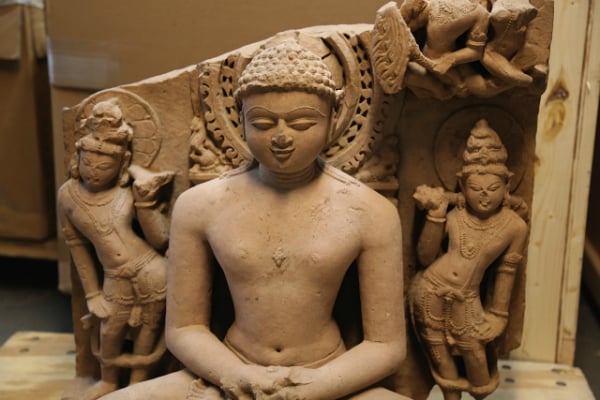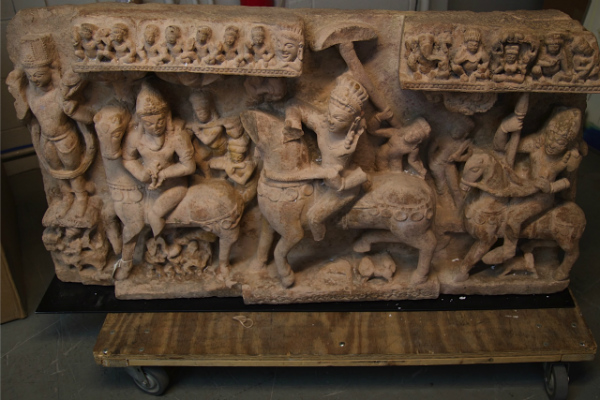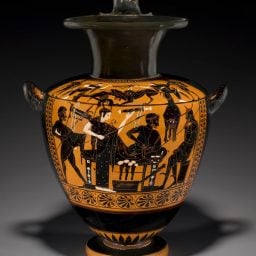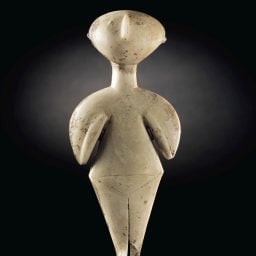A group of looted antiquities seized in the US are making the long journey home. At a ceremony at the Indian Consulate in New York on August 14, India’s independence day, officials from the US Department of Homeland Security returned to India 10 stolen antiquities valued at a combined $1.15 million.
News of the return was first tweeted by the blog Chasing Aphrodite. The District Attorney’s office confirmed it to Artnet News, along with a detailed accounting of the objects, their approximate value, and the locations from which they were taken.
The objects were seized in a series of raids in 2015 and 2016 from sources including Christie’s Rockefeller Center headquarters, Nancy Weiner Gallery, and Maitreya Gallery on New York City’s Upper East Side.

A sandstone stele of Rishabhanata from the 10th century, believed looted, seized in a raid of Christie’s as part of an international investigation into former dealer Subhash Kapoor. Photo courtesy of the Department of Homeland Security.
S. Vijay Kumar, a Singapore-based author and founder of India Pride, which tracks Indian antiques, told Artnet News that India “owes a great debt and thanks for the years of hard work” put into these cases by the Manhattan District Attorney’s office. Matthew Bogdanos, the marine-turned-New York assistant district attorney, leads the antiquities trafficking unit behind these seizures and other high-profile examples from the Metropolitan Museum of Art and collector Michael Steinhardt.
The returned objects include three items seized from the Weiner Gallery, five from Maitreya Gallery, and two from Christie’s.
The objects, according to the DA’s documents, include a marble apsara ceiling panel dating to the 10th century and valued at $500,000 from Weiner Gallery, and, from Maitreya, a red sandstone figure of Parvati holding a fly whisk aside a male attendant, from Rajasthan or Madhya Pradesh, dating to the 11th century and valued at $54,000.
The highest-value items were those seized from Christie’s: a buff sandstone stele of Rishabhanata flanked by a pair of standing attendants, from Rajasthan or Madhya Pradesh, dating to the 10th century and valued at approximately $150,000, and a buff sandstone panel depicting Revanta and his entourage—a rare representation of the equestrian deity, a figure of great importance in Hinduism—dated to the 8th century, valued at approximately $300,000.
Notably, according to Kumar, this marks the first time that US law enforcement has openly disclosed the names of galleries and individuals from whom the artifacts were seized, as well as their valuations. (A spokesperson for the District Attorney’s office did not immediately respond to a request for confirmation.)
Chasing Aphrodite, which covered the March 2016 raids during New York City’s high-profile Asia Week, wrote at the time that the two works seized from Christie’s were due to be offered as part of the private collection of London doctor Avijit Lahiri and his wife Bratatihis.
According to the blog, court records revealed a link between the objects and a key supplier of Subhash Kapoor, the American antiquities dealer now on trial in India for his role in a global trafficking network.
The raids demonstrated that the 2012 seizure of Kapoor’s business records (as well as more than $100 million in looted antiquities he had in storage) had helped investigators identify more looted antiquities on the American art market.










